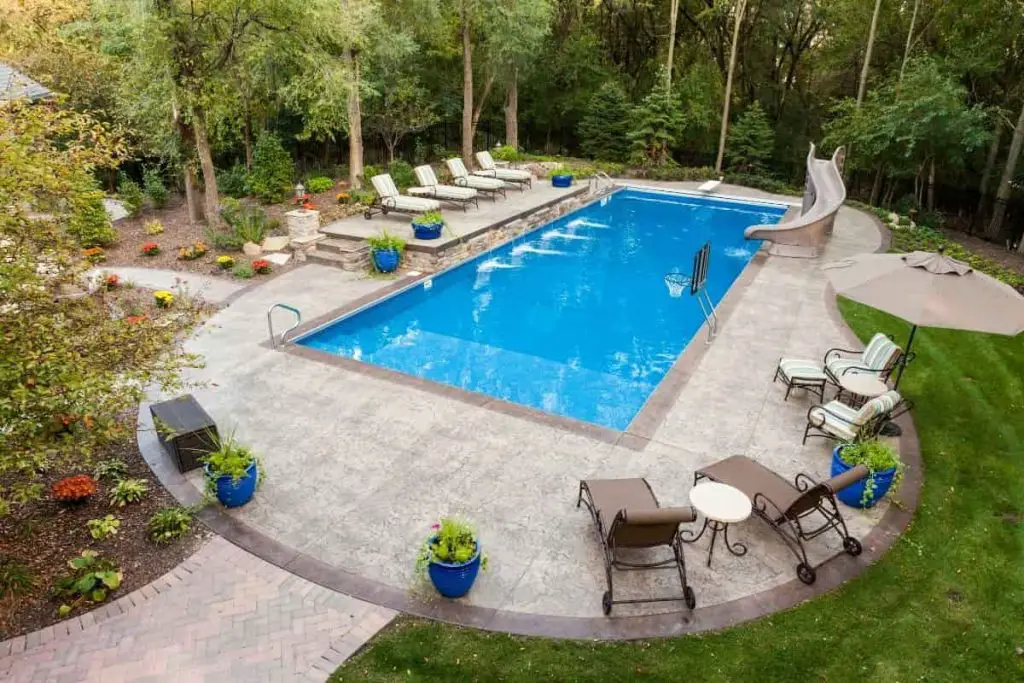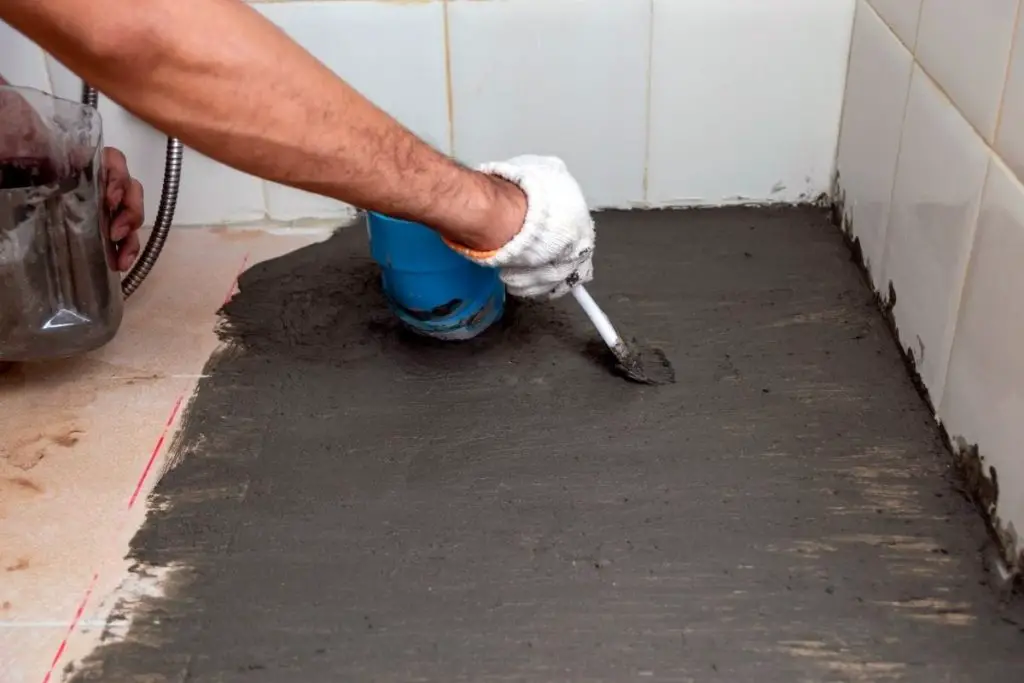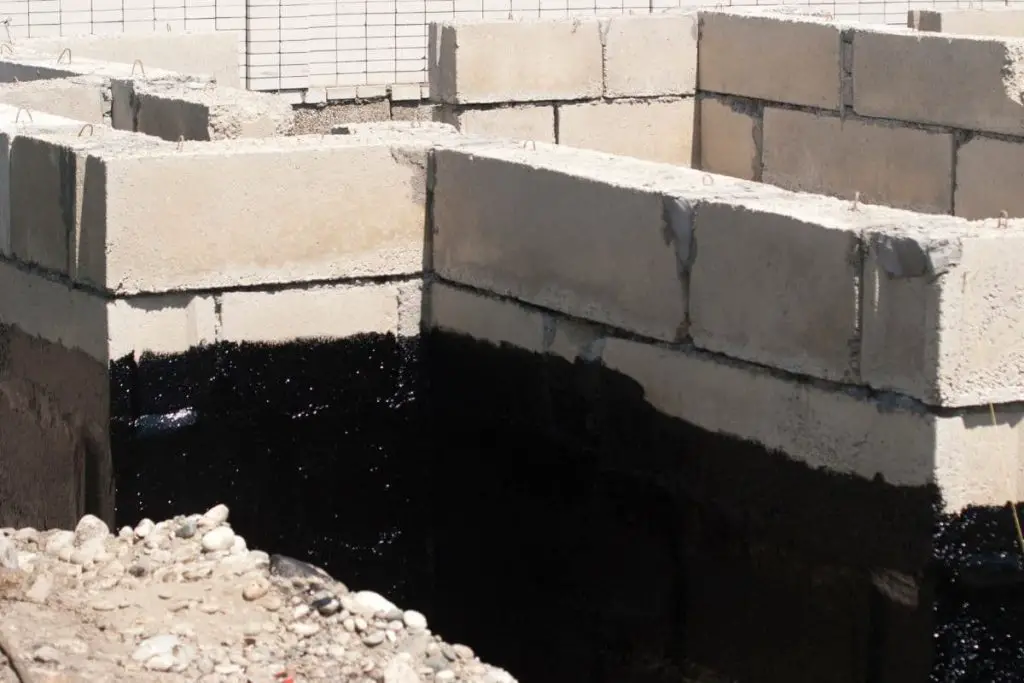Are you looking for an easy project to finally make good use of all that empty space in your backyard? What you might be interested in is a pool! We know how difficult and expensive the construction of a proper swimming pool can be. Luckily, there is a cheaper and more efficient option – a pool made of cinder blocks.
Although this might not be a revolutionary idea, it’s certainly not an option everyone is on board with. Building a cinder block pool can come with its own unique expenses and time requirements. However, it can yield some great and commendable results that will give your empty space a revamped look with modern architectural innovation.
In order to construct a block wall pool that maintains a semblance of harmony, one of the things we must consider is how to waterproof those exterior walls.
Let’s look at some efficient methods to waterproof concrete blocks with the best results.
How to Waterproof a Cinder Block Pool
Before you get your cinder block pool ready for summer, you must waterproof it in order to avoid future problems. Here are some directions on how to waterproof a cinder block pool.
First, you need to identify what type of blocks you are using. This way, you’re able to purchase the appropriate, durable products that will suit your pool and keep it going for a long time. The two kinds of blocks used to make cinder block pools would be either mortar-type blocks or clinker-type blocks. They are both concrete blocks but mortar type blocks are more expensive than clinker types.
Mortar blocks are also less fussy because they don’t need as much sealant in comparison to clinker blocks. This means they are more long-lasting and durable. On the other hand, clinker blocks are a much cheaper option if you’re on a budget. Unfortunately, that also means that their lifespan is much shorter. Their seal maintenance will need to be done much more frequently to ensure they stay waterproof. This is because they’re more prone to breaking and chipping due to external pressures like water damage. Clinker-type blocks are essentially made of hunks of concrete, and only certain sealant products made in Portland suit them.
Using Epoxy Coating
After successfully identifying the types of blocks you are using, you must know which sealants are the best for waterproofing. One of the best ways to waterproof pools made with concrete blocks is to use materials like Epoxy Coating. This product is interesting because it contains two elements called an Epoxy Resin and a Polyamine Hardener.
When mixed together and applied to the crevices between your pool block walls, these products will create a chemical reaction that will produce cross-linking between the two elements.
This will need to cure for some time, resulting in an extremely tough glue that will help your pool lining essentially fuse together and become waterproof for a long time. It will also give your pool an extra lining or layer to ensure that it does not break or crumble.
Water seeping from the cracks in between the blocks is your worst enemy. Waterproofing a pool will allow you to enjoy your pool longer and result in fewer repairs in the long run.
However, it is important to know that Epoxy Resin does take a long time to cure. But it is permanent once it has completed its curing process. It is also weather-resistant and waterproof. But the entire surface must be coated with no missed spots.
Please make sure when applying the Epoxy Resin that it is applied smoothly without any gaps. A solid wall seal made from Epoxy is what will lead to the best waterproofing results. This may seem like a tedious process, but you’ll benefit from it in the long run.
Other Waterproofing Options
Another way to waterproof your swimming pool surfaces can be to use simpler products like waterproofing paint – which is commonly used in masonry. Just like the epoxy resin, it’s important to push the paint into all the crevices and gaps where the blocks meet for extreme protection and high coverage.
Of course, it is also important to use the proper brushes, such as big painting brushes and a paint roller, and to allow the coats to dry completely. This may take many days and applications of multiple coats of the paint, and repeating the process several times to ensure the best waterproofing protection.
Again, this would only benefit you in the long run. It may take a bit more of your time today, but this is what will save you from continuous repairs in the future and give you peace of mind.
As you might have guessed, waterproofing your concrete pool walls includes making them completely resistant to moisture and salt permeation. This means that you have to make it so strong and durable that it will not budge or disintegrate because of any external forces, be it groundwater or the water that you use to fill your chlorine-treated pool.
It is also important to understand that cinder block walls are extremely porous, which means that in order to seal them, you must use adhesives, cement, and epoxy resin in conjunction with one another. This means creating mixtures and applying the bond coating in order to prolong the life of your pool as much as possible while not missing out on quality.
How to Seal a Block Swimming Pool
Some ways to seal your concrete or cinder block swimming pools would be to first remove all grime, oils, and dirt particles from them and to put on a fresh, thin coat of sealant using a paint roller. You can also use cementitious and waterproof barrier products and apply coats of it, which will lead to a strong bonding that will allow for easy maintenance.

However, please note that block swimming pools don’t need to be sealed regularly. Instead, resealing them every couple of years is best. It all depends on the weather conditions of where you live and the level of sun exposure your pool gets.
By sealing, what you are doing here is protecting the pool from future damage and saving your money. This ensures that your handmade concrete block pool looks brand new year-round.
Cinder Block Pool Problems
Cinder block pools do come with some problems. For one thing, applying plaster to waterproof or seal them is impossible. This is usually because the cost outweighs the benefits most of the time, so cheaper materials like gunite are used instead.
Cinder block pools in general are also much more vulnerable to UV rays from sun exposure and are at risk of being disintegrated easily by harsh groundwater with a stronger pH. This may lead to your pool floor decaying over time, and pieces may start chipping off.
You may also find that your pools have a rough surface on the ground and walls, and cracks and gaps are easy to miss while applying the waterproof finish. Cinder block pools are also subject to discoloration over time.
However, these are all common problems that you can easily avoid by taking good care of your pools and maintaining their structural integrity by regularly doing the proper maintenance.
Cinder Block Pool Cost
Cinder block swimming pools have an overhead cost of a minimum of $2,000, going upwards to $4,000 depending on where you live as well as the quality and price of the materials you use. It also depends on the size of the pool you want to create. The bigger a pool, the more materials and lining supplies you would need, increasing the overall cost of the pool.
The higher the materials and maintenance costs, the more expensive and costly your pool decks, pool forms, and other expenses will be. Luckily, it’s easy to create a customized pool according to your budget when working with concrete blocks. Just make sure you price everything out well before jumping into the project.
Make a list of the materials you will need and ensure to price all of them out according to the dimensions of your pool. See if this matches your set budget and adjust measurements accordingly.
Concrete Pool Waterproofing Products
As we discussed, concrete pools require waterproofing. Several products on the market are specifically made for this job. Some key products in waterproofing your concrete block pools are materials like liquid rubber coatings, epoxy resins, cementitious systems, and waterproofing acrylic paints.
You can also look for epoxy and chlorinated rubber paints, which are extremely high quality and durable. The most helpful way to explain how these paints work is that they provide the most ideal resistance to chemicals that lead to abrasions, chipping, and damage. Eventually, damage accumulates and unless you regularly maintain your pools, your pool will suffer significantly.
Investing in a high-quality chlorinated rubber pool paint or epoxy paint is so worth it, and we highly recommend it. This way, your pool walls will stay durable in both fresh and saltwater. Whether your pools are made of cinder blocks, concrete blocks, gunite, marcite, or any other masonry surfaces, using high-quality paints to fill in the gaps between your blocks is key in keeping your pools in prime condition so they last longer.
Some materials you can use are SANI-TRED, Emex Swim Pool Paints, ISOMAT Epoxycoat-s, and ISOMAT Durocret-plus cementitious repair mortar. These are all good options if you are looking to waterproof a cinder block pool.

FAQs
Will Cinder Blocks Hold up in Water?
Cinder blocks are quite porous and allow water to get inside more easily compared to standard concrete blocks. This means that unless you properly waterproof them with the appropriate materials, they will be prone to deteriorating.
Harsh groundwater and chlorinated water are especially likely to break down cinder blocks structurally, and the walls of your pool will end up crumbling. This is why they must be waterproofed and sealed well before use.
Can You Make a Pool out of Cinder Blocks?
It is definitely possible to make a pool with cinder blocks. It is a great budget-friendly and efficient option. But it is very important to line the walls with a waterproof sealant such as waterproof paint, fiberglass reinforced polyester, or even epoxy resin. If that is not done, then the pool will eventually wear away from external pressures.
Should You Waterproof a Concrete Pool?
Waterproofing pools is necessary, no matter what type of pool you have. It is always better to waterproof concrete pools, especially if your pool site is subject to unrelenting groundwater, which can cause serious damage to concrete.
The best way to waterproof concrete pools is to use epoxy-cement systems to create the best protection against deterioration. This is done by applying several layers and letting it cure before use. This way, you will not have to worry about the cement cracking or significant wear and tear. A solid and resistant waterproof layer will protect the concrete pool from the elements.
What Happens When Cinder Blocks Get Wet?
Cinder blocks are permeable to water and vapor. This means they can absorb water similar to the way a sponge can. That is why when cinder blocks get wet, they start to fall apart. If your cinder block pool is not properly waterproofed, pieces from the surface will start breaking off and floating upwards. Water damages blocks, their structural integrity, and surface coatings.
This would eventually lead to the entire pool losing its foundation and the walls would start moving about and breaking down. This is why it is very important to keep maintaining and waterproofing your ground pools and their wall cores.
Does Plaster Make Pools Waterproof?
Plaster is not a very feasible option for waterproofing pools because not all plasters are completely waterproof. Plaster is also more likely to wear down easier. Even though it looks smooth and gives a finished look, it’s not the most reliable option. If you must use plaster, you must use the kind specifically made for waterproofing.
Waterproof plasters allow for the critical waterproof barrier to be created and also allow it to remain breathable. These plasters tend to have a Hydrophobic ingredient which is what makes them waterproof.
Important Safety Note
We might have divulged all the secrets that professionals know and use while constructing cinder or concrete block waterproof pools, but we want to stress that you use caution while painting and sealing your own cinder block pool at home.
Please remember to wear some goggles, wear rubber gloves to protect your hands, and wear long-sleeve tops, full-length pants, and closed-toed shoes. There will inevitably be fumes, so try to wear a mask to protect your nose lungs from any strong chemical epoxy sealant and paint fumes. It’s also important you remember to give a decent amount of time in between paint coats to allow for adequate drying and curing. Doing this will both ensure your safety and a near-perfect product – your very own waterproof cinderblock pool. Professionals won’t be able to tell the difference.
Bottom Line
Waterproofing your swimming pools is a great idea and a cheaper alternative to building a proper pool with concrete, steel rebars, and high-quality material – especially if you are on a budget. It is extremely important to buy the right materials and pay careful attention to the application process when waterproofing cinder and concrete swimming pools.
And don’t forget to be patient and let the products themselves work their magic. Cinder block and concrete block swimming pools are easy to work with. The materials to maintain and waterproof them are simple to understand, easy to apply, and will last you a long time with proper care and maintenance. We hope this article helped you with your swimming pool waterproofing needs and that you’ll get to enjoy some relaxing pool time in the near future.


